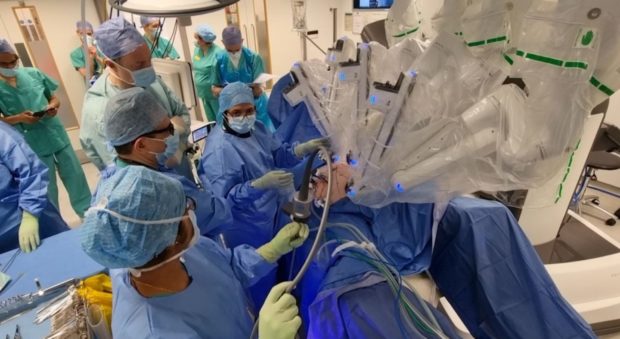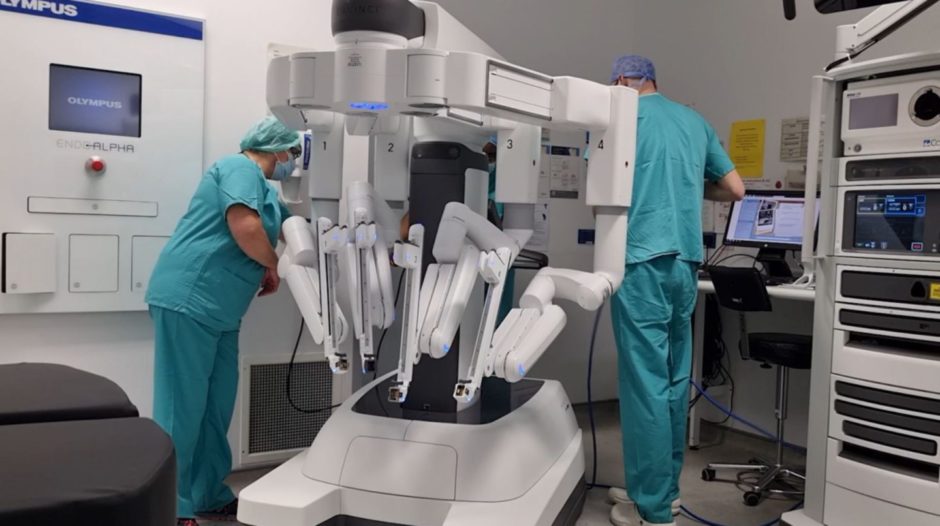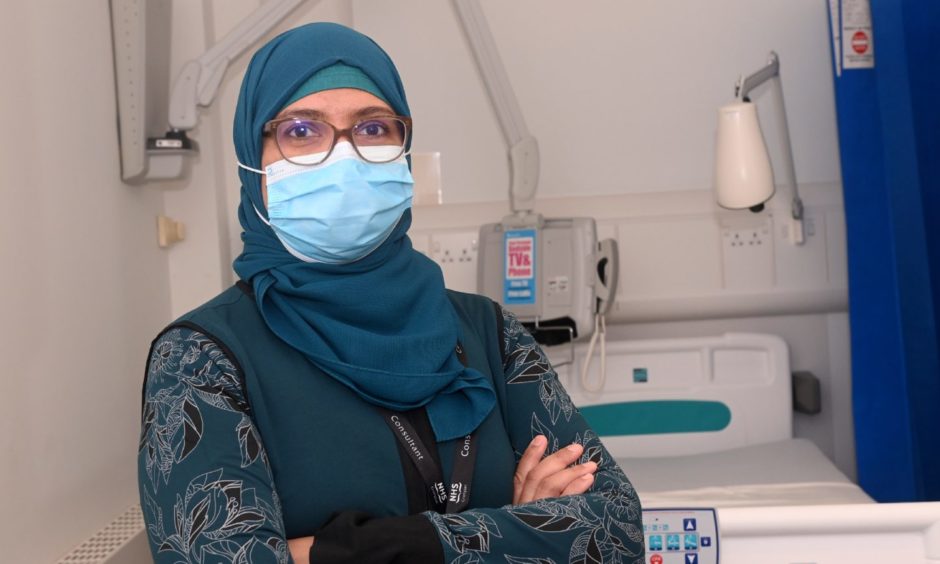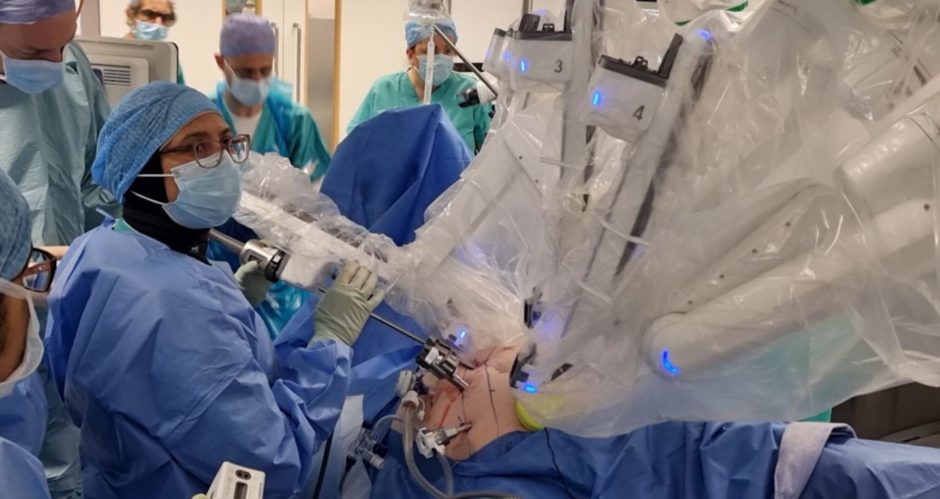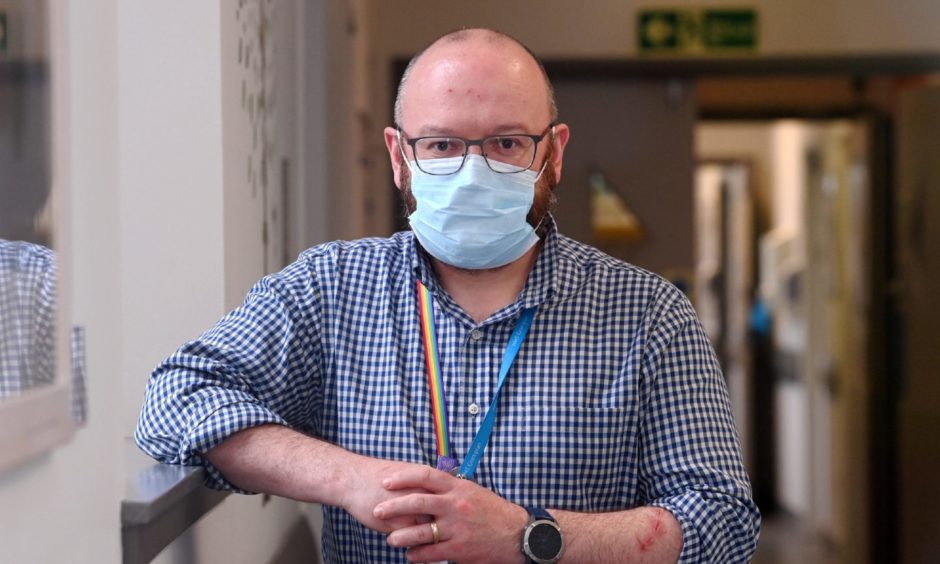They may sound like something from science fiction, but Aberdeen’s new “robot surgeons” are expected to have a very real impact at the north-east’s flagship hospital.
Announcing the purchase of the cutting-edge technology today, north-east health chiefs explained how the equipment will reduce waiting times for patients and increase capacity.
The health board has acquired three new robots to join their surgical team at Aberdeen Royal Infirmary as part of a £3.5 million investment in improving patient care in the region.
The two da Vinci Xi robots and the Mako Robotic-Arm Assisted Surgery System – which is likened to a giant mechanical spider – are the latest additions to its robotic-assisted system, which was first introduced in 2015.
Data collected from the last six years has shown that patients who have been operated on with one of the robots have recovered a lot quicker due to the less invasive approach.
Cutting-edge technology to give patients the best experience
Shafaque Shaikh, consultant in colorectal and general surgery, explained that this will allow surgeons to treat more patients more quickly as they look to emerge from the pandemic.
She said: “On average, patients should have shorter hospital stays following robotic-assisted surgery, quicker recovery times, they need less pain control and less anaesthetic – all of these factors benefit individual patients.
“More widely, it benefits everyone in the region, as it increases our capacity and allows us to see more patients, because people are having to spend less time in hospital following surgery.
“This investment in cutting-edge technology really ensures we can give our patients the best experience and that myself and my fellow surgeons have the most modern tools available to do our job.
“It’s revolutionising the way we work and words are not enough to express how excited we are to have them.”
How do people respond to having an operation using a robot?
Urology consultant Justine Royle added: “Since becoming the first territorial board to start using these machines, we have really seen the advantages and have striven to place ourselves as a centre of excellence within Scotland with this technology.
“The setting and equipment it provides really is ideal for developing and honing skills that are going to become more and more desirable and, indeed, necessary in the future.
It’s all an investment in the future of our patients and NHS Grampian.”
The new da Vinci Xi robots are currently based at Aberdeen Royal Infirmary, while the Mako system, also referred to as “the spider” by hospital staff, will be used on hip and knee replacement patients at Woodend Hospital.
Alan Black from Aberdeen was the first patient to be operated on with one of the new machines last week.
Following his procedure, the 59-year-old shared his experience to reassure others about the safety of going through a surgery with the new technology.
He said: “If anyone is worried about undergoing surgery where a robot is used, there’s nothing to be apprehensive about.
“The surgeon is still in full control and ultimately it benefits us as patients.
“I was operated on with the robot, where smaller holes are needed, and I think I’m feeling better than I could have otherwise.
“Ms Shaik was in charge of it all and has been into the ward every day to see me.
“The level of care has been exceptional – you can’t fault anything.”
Investing in the future of NHS Grampian
The region’s original device – which will now be used for training surgeons – has been used for urology and gynaecology patients since 2015.
The latest additions will allow NHS Grampian to increase its robotic surgery offering to cover general surgery and other sub-specialities over time as well as developing other specialities.
Deputy chief officer of acute, Cameron Matthew, explained how he hoped the investment will not only benefit patients, but also help NHS Grampian become a “centre for excellence”.
He said: “The hope is we will be able to develop a regional training centre and specialist robotic division.
“That in turn will hopefully attract robotic fellows to Aberdeen before they move on to substantive posts elsewhere, or indeed they decide to stay in the north-east.
“Part of the reason we’ve got it is to help develop our workforce and also attract some of the best young talent in the country to come to Grampian.”
